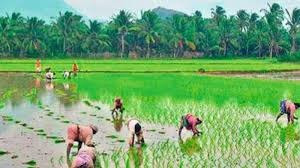THE INDIAN'S LIFE STYLE
The lifestyle of India refers overall the thousands of well defined and special cultures of all religions and sections present in India.
In India there are different languages,religions,dance,music,architecture,food and customs differ from place to place within country.
Faithful culture:
India is the birth place of Hinduism,Jainism,Buddhism, and Sikhism,and other religions these are all come under the concept of dharma and karma.
today Hinduism and Buddhism are the world's third and fourth-largest religions in our country 80-82% of populations follow these religions.
Festivals:
. Popular religious festivals include the Hindu festivals of Navratri, Janmashtami, Diwali, Maha Shivratri, Ganesh Chaturthi, Durga Puja, Holi, Rath Yatra, Ugadi, Vasant Panchami, Rakshabandhan, and Dussehra.
.Several harvest festivals such as Makar Sankranti, Sohrai, Pusna, Hornbill, Chapchar Kut, Pongal, Onam festival are also most popular.
Foods:
Indian food is as various as India. Indian food use many ingredients, deploy a wide range of food preparation styles, cooking techniques, and presentations. From salads to sauces, from vegetarian to meat, from spices to sensuous, from bread to desserts, Indian food is invariably complex.
Clothes:
Traditional clothing in India greatly varies across different parts of the country and is influenced by local culture, geography, climate, and rural/urban settings.
Popular styles of dress include draped garments such as sari and mekhela sador for women and dhoti or lungi or panche for men.
Stitched clothes are also popular such as churidar or salwar-kameez for women, with dupatta thrown over shoulder completing the outfit. The salwar is often loose fitting, while churidar is a tighter cut.The dastar, a headgear worn by Sikhs is common in Punjab.
Languages:
Sanskrit has had a profound impact on the languages and literature of India.Hindi, India's most spoken language, is a "Sanskritised register" of the Delhi dialect.
In addition, all modern European languages, Munda languages and Dravidian languages, have borrowed many words either directly from Sanskrit .
Words originating in Sanskrit are estimated to constitute roughly fifty percent of the vocabulary of modern European languages and the literary forms of Telugu, Malayalam and Kannada. Tamil, although to a slightly smaller extent has also been significantly influenced by Sanskrit.
"A CULTURE LIVES IN HEART AND IN THE PASSION OF PEOPLE"





❤️
ReplyDeleteNice ra...
ReplyDelete👍👍
ReplyDelete☺
ReplyDeleteGud info
ReplyDeleteGood info keep it up
ReplyDeleteIam from America...but from today onwards iam a big fan of indian life style only because of this article 😍😍 i also want to be indian...i iove india
ReplyDelete